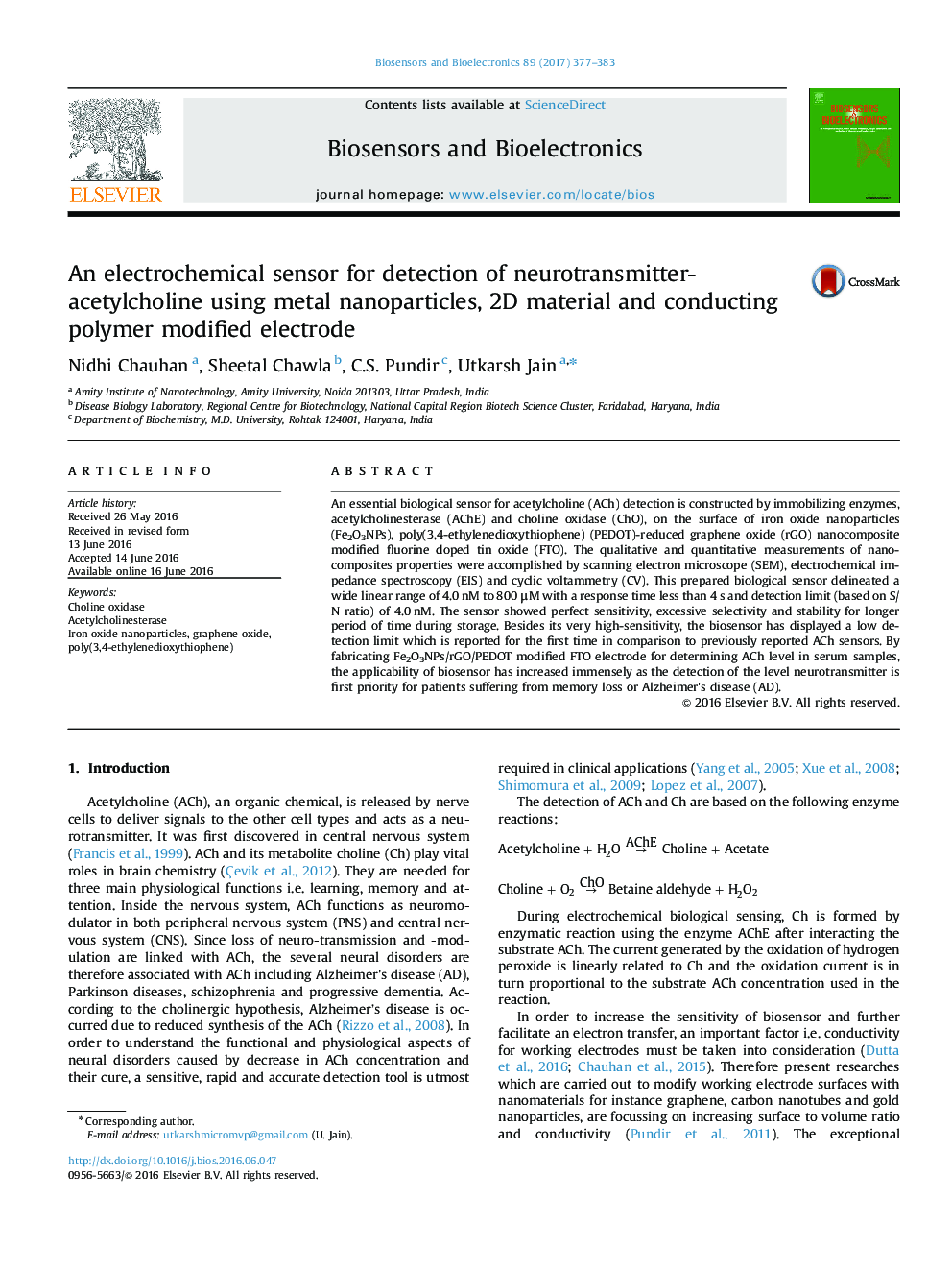| Article ID | Journal | Published Year | Pages | File Type |
|---|---|---|---|---|
| 5031697 | Biosensors and Bioelectronics | 2017 | 7 Pages |
â¢Fe2O3NPs/PEDOT-rGO nanocomposite film explored for acetylcholine biosensing.â¢Estimation of acetylcholine in serum samples of Alzheimer's patients.â¢Bioelectrode studied using SEM, CV and EIS and exhibit high sensitivity.
An essential biological sensor for acetylcholine (ACh) detection is constructed by immobilizing enzymes, acetylcholinesterase (AChE) and choline oxidase (ChO), on the surface of iron oxide nanoparticles (Fe2O3NPs), poly(3,4-ethylenedioxythiophene) (PEDOT)-reduced graphene oxide (rGO) nanocomposite modified fluorine doped tin oxide (FTO). The qualitative and quantitative measurements of nanocomposites properties were accomplished by scanning electron microscope (SEM), electrochemical impedance spectroscopy (EIS) and cyclic voltammetry (CV). This prepared biological sensor delineated a wide linear range of 4.0 nM to 800 μM with a response time less than 4 s and detection limit (based on S/N ratio) of 4.0 nM. The sensor showed perfect sensitivity, excessive selectivity and stability for longer period of time during storage. Besides its very high-sensitivity, the biosensor has displayed a low detection limit which is reported for the first time in comparison to previously reported ACh sensors. By fabricating Fe2O3NPs/rGO/PEDOT modified FTO electrode for determining ACh level in serum samples, the applicability of biosensor has increased immensely as the detection of the level neurotransmitter is first priority for patients suffering from memory loss or Alzheimer's disease (AD).
